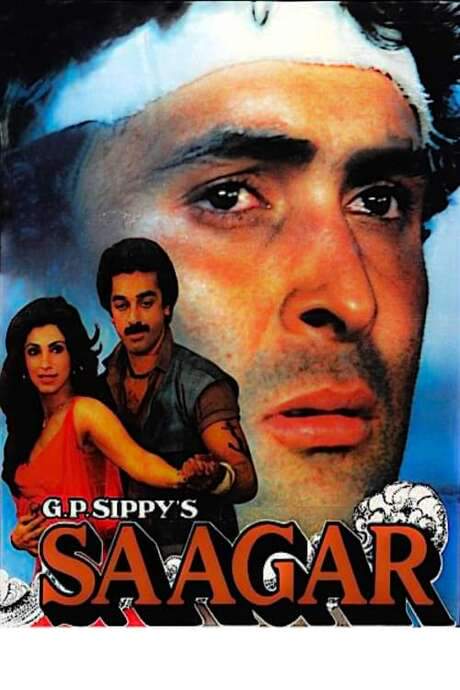
Sankarabharanam
Year: 1980
Runtime: 143 mins
Language: Telugu
Director: K. Viswanath
Sankara Shastri, a devout and renowned classical vocalist, attracts the admiration of Tulasi, the daughter of a prostitute. Tulasi longs to devote herself to serving the singer, while her mother pressures her to continue the family trade, creating a poignant clash between art, devotion, and societal expectation.
Warning: spoilers below!
Haven’t seen Sankarabharanam yet? This summary contains major spoilers. Bookmark the page, watch the movie, and come back for the full breakdown. If you're ready, scroll on and relive the story!
Sankarabharanam (1980) – Full Plot Summary & Ending Explained
Read the complete plot breakdown of Sankarabharanam (1980), including all key story events, major twists, and the ending explained in detail. Discover what really happened—and what it all means.
Shankara Sastri, a widower with a daughter named Sarada, is one of the era’s most beloved Carnatic singers, renowned for having mastered the raga Sankarabharanam. Tulasi is the daughter of a prostitute, a devout admirer of his music who watches him from afar with reverent awe.
One morning, Tulasi happens upon Sastri teaching his daughter to sing along a riverbank. Enraptured by his voice, she dances in the water, completely absorbed in the moment. Sastri notices her, she regains her senses, and she expects a rebuke, but he instead meets her with quiet appreciation for her sincerity and continues singing.
Tulasi’s mother wants her to pursue the family tradition of prostitution, believing she can force a rich landlord to pay for Tulasi’s company. Tulasi escapes by train, but fate reunites her with Sastri when she sneaks into his compartment and travels for a while with him. Her mother discovers her and publicly accuses Sastri of abducting her daughter. A deal is struck, and the landlord comes to see Tulasi—and rapes her. After a photograph of Sastri is found in Tulasi’s room, the landlord breaks the frame and taunts her, claiming she is now free to be Sastri’s mistress. In a burst of anger, Tulasi stabs him with a shard from the broken frame.
At the murder trial, Sastri enlists a close friend to defend Tulasi. Tulasi’s mother is jailed for prostitution, while Tulasi herself goes free but ends up homeless. Sastri brings Tulasi into his own home, only to face rumors that she has become his mistress. When a temple engagement is arranged for Sarada, everyone—including Sastri’s musical companions—deserts Tulasi in the public eye. Feeling responsible for the insult to the man she reveres, Tulasi leaves Sastri’s house.
Time passes, and as pop music rises, classical music loses its grip on the public’s imagination. Sastri’s audience—and with it his comfortable life—shrinks. Ten years later, he lives in a small house with his now-grown daughter. Tulasi, meanwhile, inherits her mother’s property and raises a ten-year-old son, the result of the rape, whom she wishes to become Sastri’s pupil. She schemes to turn him into the living aabharanam—the ornament that would adorn Shankara Sastri as his disciple, echoing the mythic idea that even a venomous snake can become an adornment for Lord Shiva.
Tulasi has her son join Sastri’s household undercover as a servant, her eyes watching from a distance as the boy gradually becomes the maestro’s protégé. A teacher and a dreamer, Kameswara Rao, a schoolteacher by trade but a dabbling singer, falls in love with Sarada. Sastri initially resists the match, but changes his mind after hearing Rao sing at the village temple.
Tulasi arranges a grand concert on the day of Sarada’s wedding, in a new auditorium she renames for her mentor. Sastri performs, but a heart attack interrupts him. From the wings, Tulasi’s son steps forward to carry the performance to its finish. As Sastri watches the boy, he recognizes that the student is Tulasi’s son. A doctor is summoned, yet Sastri waves him away, certain his end is near. When the song concludes, Sastri symbolically bequeaths his musical heir the precious aabharanam—his leg bracelet—passing the symbol of his art to the boy, and dies. Tulasi rushes to her guru and dies at his feet. The film closes on a note of tragic triumph, as Sastri’s daughter and her newlywed husband take custody of Tulasi’s son, carrying forward the lineage of music. Gopalam sits among the shadows of the hall, a quiet reminder of the world these melodies inhabit, as life moves on around them.
Last Updated: October 09, 2025 at 15:00
Unlock the Full Story of Sankarabharanam
Don't stop at just watching — explore Sankarabharanam in full detail. From the complete plot summary and scene-by-scene timeline to character breakdowns, thematic analysis, and a deep dive into the ending — every page helps you truly understand what Sankarabharanam is all about. Plus, discover what's next after the movie.
Sankarabharanam Timeline
Track the full timeline of Sankarabharanam with every major event arranged chronologically. Perfect for decoding non-linear storytelling, flashbacks, or parallel narratives with a clear scene-by-scene breakdown.

Similar Movies to Sankarabharanam
Discover movies like Sankarabharanam that share similar genres, themes, and storytelling elements. Whether you’re drawn to the atmosphere, character arcs, or plot structure, these curated recommendations will help you explore more films you’ll love.
Explore More About Movie Sankarabharanam
Sankarabharanam (1980) Scene-by-Scene Movie Timeline
Sankarabharanam (1980) Movie Characters, Themes & Settings
Sankarabharanam (1980) Spoiler-Free Summary & Key Flow
Movies Like Sankarabharanam – Similar Titles You’ll Enjoy
Mugavari (2000) Full Summary & Key Details
Premabhishekam (1981) Full Summary & Key Details
Sagara Sangamam (1983) Full Summary & Key Details
Saagar (1985) Detailed Story Recap
Prem Rog (1982) Ending Explained & Film Insights
Swarnakamalam (1988) Film Overview & Timeline
Gangaa Jamunaa Saraswathi (1988) Full Summary & Key Details
Vaishali (1988) Ending Explained & Film Insights
Srikanto (1000) Film Overview & Timeline
Sangam (1964) Movie Recap & Themes
Sopanam (1993) Complete Plot Breakdown
Sangram (1993) Full Summary & Key Details
Sargam (1992) Full Summary & Key Details
Swara Mandal (1997) Ending Explained & Film Insights
Kulasami (2023) Story Summary & Characters

















